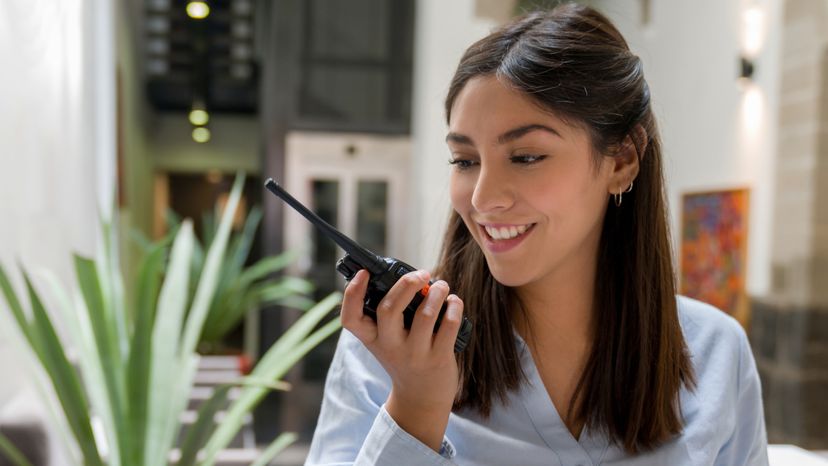
Nextel phones offer a service called Direct Connect that allows you to push a single button and connect with another Nextel user. This service is typically free as long as the other user is in the local coverage area. You can even specify a group of Nextel users (up to 100) that you can connect to all at once, similar to a dispatcher's radio like police or taxi companies use. This makes Nextel a very popular provider for companies with a workforce that can be spread out, such as construction work.
Nextel is unique among service providers because it has an entirely separate special cellular network that has its own frequencies and equipment in addition to the normal cell network shared with other providers. This network is based on Motorola's Integrated Digital Enhanced Network (iDEN) and makes Direct Connect possible. It uses the 800 MHz portion of the radio spectrum assigned to specialized mobile radio (SMR) service. Nextel has purchased a large segment of these frequencies in a significant number of the national and international cellular service markets.
Advertisement
iDEN uses TDMA technology to split a 25 KHz frequency into six separate time slots. Using a combination of half-duplex and full-duplex signals, iDEN is able to provide:
- Normal cell phone voice communications
- Messaging (pager, e-mail)
- Digital two-way radio (one-to-one and group) - This is the dispatch call capability.
- Data services (Wireless Web and private networks)
The digital two-way radio service uses a half-duplex signal. A normal cell phone call uses two separate frequencies, one to send and one to receive, for each call while a Direct Connect call uses only a single frequency. Direct Connect relies on the proven technology of Push To Talk (PTT), commonly used in dispatch radio systems. PTT requires the person speaking to press a button while talking and then release it when they are done. The listener then presses their button to respond. This way the system knows which direction the signal should be traveling in. To enable Direct Connect, Nextel configures your phone to use the dispatch call service to reach the person or persons you specify. This person (or group) must use Nextel's service also. When you make a Direct Connect call to someone, here's what happens:
- You hit the Direct Connect button, which is configured with the number(s) of the person (or group) you are calling.
- Your phone establishes a session with the Nextel iDEN-based network.
- The network determines that this is a dispatch call (Direct Connect) instead of an interconnect call (a normal cell phone call).
- The network then determines if it is a one-to-one or a group call. If it is a group call, the network duplicates the digital voice packets for each phone in the group.
- The network routes the packets to the phone (or phones) of the person (or group) you are calling.
- Their phone alerts them that they have a Direct Connect call.
- They answer the call by pressing the Talk button. Whoever is pushing the button, whether a one-to-one or group call, is the speaker.
- The call is completed and everyone disconnects.
As you can see, the Direct Connect feature still relies on cellular technology to connect to the recipient(s). A normal "walkie talkie" style two-way radio will only operate if the radios are within a certain distance of each other. Systems using the Direct Connect feature can communicate anywhere within the service area specified by Nextel, typically a large urban area or even an entire state.
See the next page for more information.
Advertisement